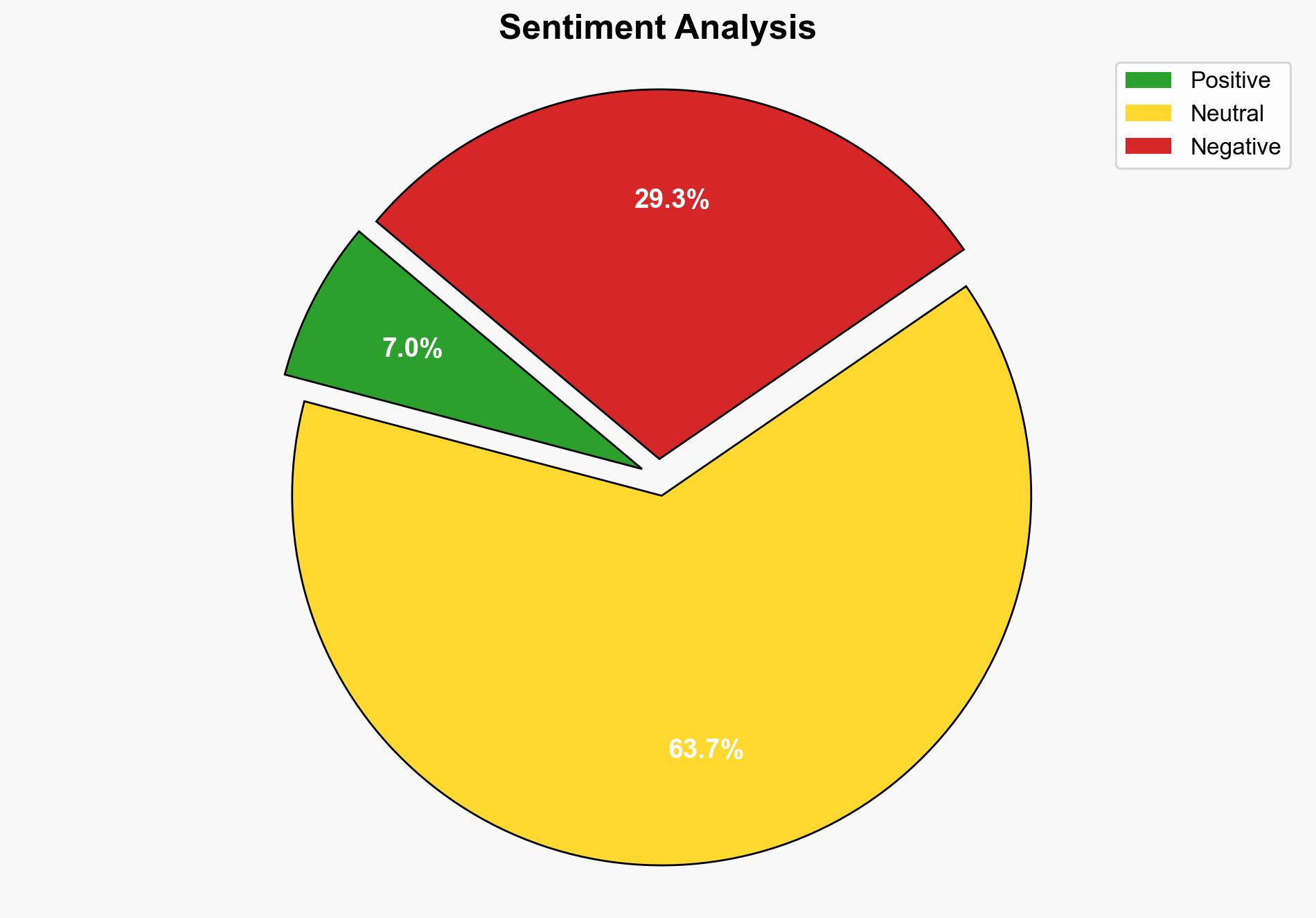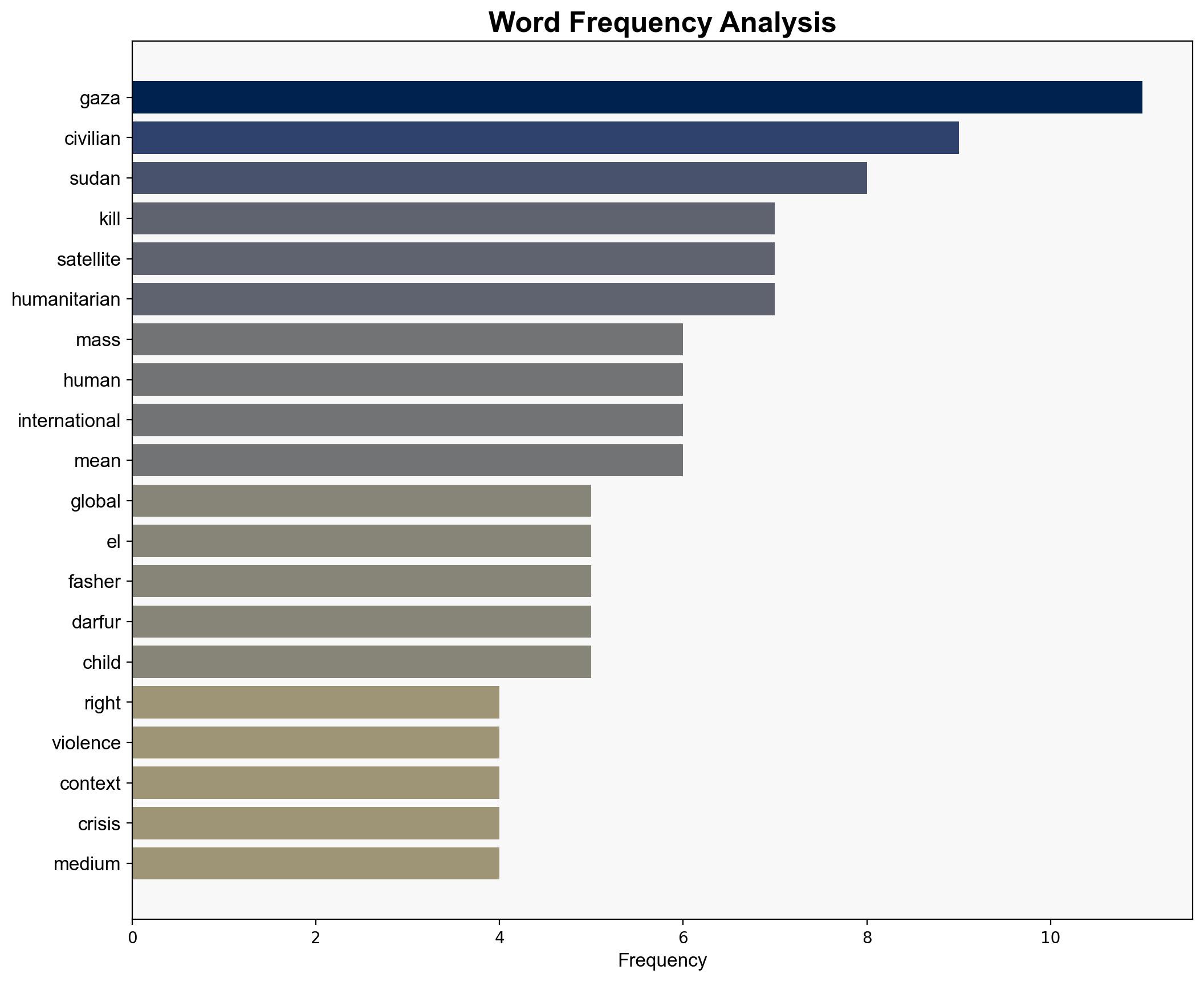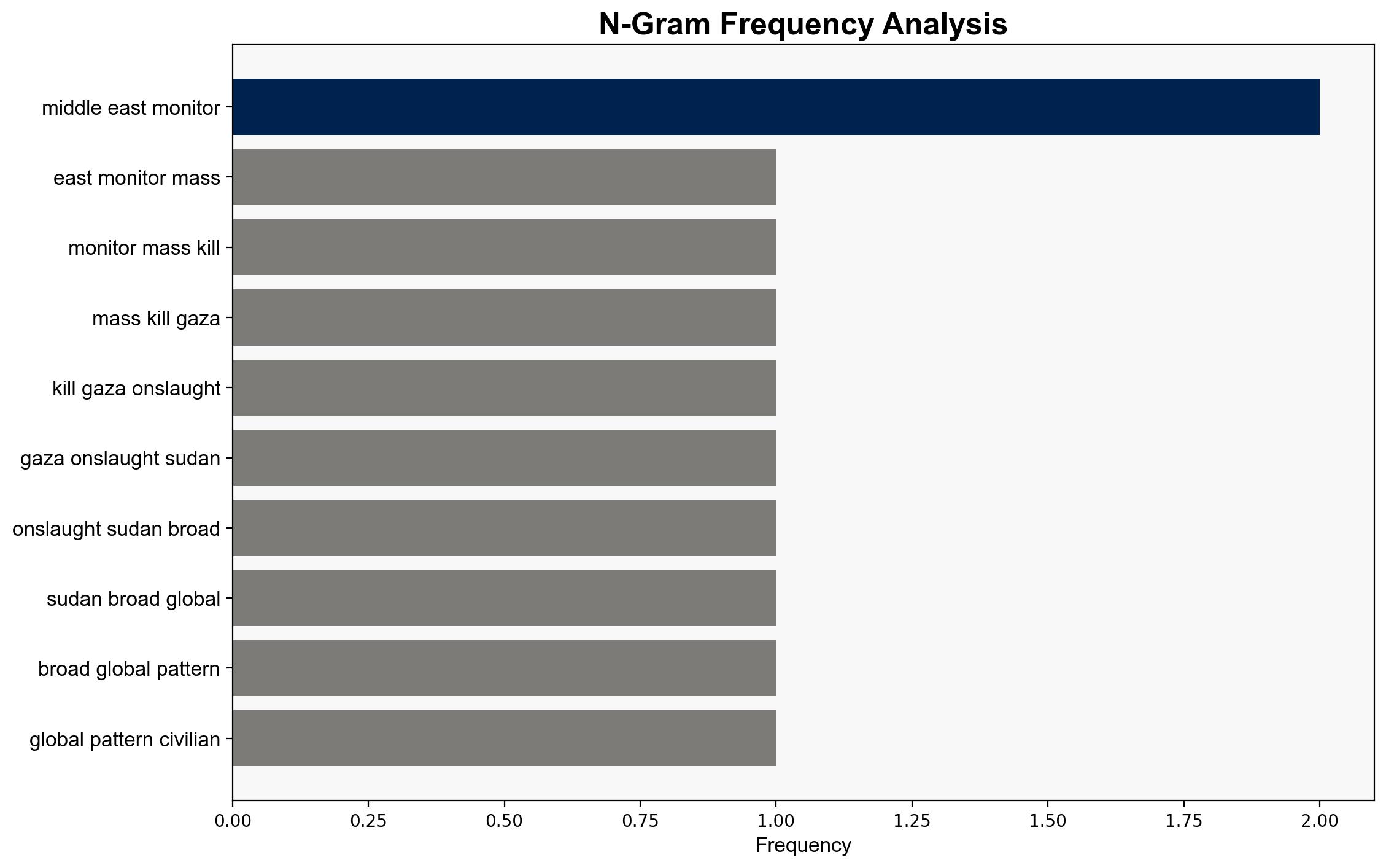Gaza and Sudan The Rubble and even Blood can be seen by Satellite – Juancole.com
Published on: 2025-11-07
Intelligence Report: Gaza and Sudan The Rubble and even Blood can be seen by Satellite – Juancole.com
1. BLUF (Bottom Line Up Front)
The most supported hypothesis is that the disparate international responses to the crises in Gaza and Sudan are influenced by geopolitical interests and historical narratives rather than the scale of human suffering. Confidence Level: Moderate. Recommended action includes advocating for balanced international engagement and humanitarian intervention in both regions.
2. Competing Hypotheses
1. **Hypothesis A:** The international community’s response disparity between Gaza and Sudan is primarily due to geopolitical interests and historical narratives. This hypothesis suggests that Gaza receives more attention due to its central role in global politics and the established advocacy networks supporting Palestinian rights.
2. **Hypothesis B:** The difference in response is due to the complexity and internal dynamics of the Sudanese conflict, which involves multiple factions and regional powers, making it less accessible and harder to mobilize international consensus and action.
Using ACH 2.0, Hypothesis A is better supported by the evidence of established advocacy networks and historical context of the Palestinian struggle, which garners more media coverage and international mobilization compared to the complex and less understood Sudanese conflict.
3. Key Assumptions and Red Flags
– **Assumptions:**
– The global community prioritizes conflicts based on historical narratives and media coverage.
– Advocacy networks significantly influence international response.
– **Red Flags:**
– Potential bias in media coverage and advocacy efforts.
– Inconsistent data on the scale of atrocities in Sudan due to restricted access and complex conflict dynamics.
4. Implications and Strategic Risks
The disparity in international response could lead to prolonged suffering and instability in Sudan, potentially escalating into a broader regional conflict. The lack of balanced engagement risks undermining global humanitarian norms and could foster resentment and radicalization. Economically, prolonged instability could disrupt regional trade and development.
5. Recommendations and Outlook
- Encourage balanced media coverage and advocacy for both regions to ensure equitable international engagement.
- Promote diplomatic efforts to address the root causes of the Sudanese conflict, involving regional powers in peace negotiations.
- Scenario-based projections:
- Best: Increased international attention leads to effective humanitarian intervention and conflict resolution in Sudan.
- Worst: Continued neglect results in escalation and regional destabilization.
- Most Likely: Incremental improvements in international response, with ongoing challenges in achieving comprehensive peace in Sudan.
6. Key Individuals and Entities
– United Nations Satellite Centre (UNOSAT)
– Human Rights Watch
– Amnesty International
– Yale Humanitarian Research Lab
7. Thematic Tags
national security threats, regional focus, humanitarian intervention, media influence





